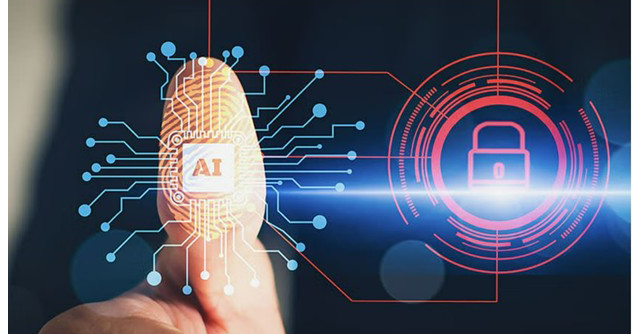
The Rise of Control Automation in Cybersecurity: How Dashboards and Smart Logic Are Redefining Governance and Risk Compliance


Once upon a time—not too long ago—governance, risk, and compliance (GRC) used to be the slow lane in the fast-moving highway of technology. Spreadsheets, emails, checklists, audits once or twice a year, manual risk registers—it was all very… retro. But then came an age where every click, tap, and voice command became a data point, every system became a target, and the word “risk” stretched far beyond what old frameworks could handle.
Today, a different kind of GRC is emerging. One where control automation isn't just a buzzword but a strategic survival mechanism. Where dashboards don’t just show status—they guide decisions. And where cybersecurity no longer waits for risk to show up at the front door; it detects the knock before it even reaches the gate.
So what’s driving this evolution? It’s not just tools or dashboards or the magic phrase “AI.” It’s the changing nature of risk itself—and the uncomfortable truth that traditional control systems simply can’t keep up.

Why Yesterday’s Risk Management Doesn’t Cut It Anymore
The challenge today isn’t just more threats—it’s the type of threats. Risk now comes wrapped in layers: from the intern using unauthorized tools to generate code to entire infrastructure systems becoming strained under the weight of real-time decision-making. There’s no longer a single “perimeter” to guard. Instead, it’s a web of data, devices, human behaviors, and third-party services all moving faster than ever.
And that’s not even scratching the surface. Consider what happens when a system starts writing its own instructions—when a developer doesn’t type out logic, but feeds prompts to a generative engine that “decides” what to do. We’ve entered a world where logic itself can be automated… which means the risks multiply exponentially.
This is why control automation has moved from a backroom IT function to a front-row leadership concern. You can’t patch what you can’t see. And you can’t see clearly if you’re still relying on quarterly reviews and point-in-time audit reports.

Control Automation: What It Really Means (No, It's Not Just Scripts)
Let’s break this down. When we say “control automation,” we’re not just talking about writing macros to reduce manual reports or setting up alerts when thresholds are breached. Those are helpful—but they're table stakes now.
Control automation, in its evolved form, is a continuous, integrated process that connects data collection, control logic, validation, and response across the entire technology ecosystem. Think of it like a living immune system: constantly scanning, adapting, and acting—not waiting for symptoms to show up.
What does this look like in practice?

• It’s a system that knows where your data is, where it came from, and where it’s going—even if it’s hopping across tools and clouds.
• It’s dashboards that do more than display—they triage, recommend, and escalate.
• It’s risk scenarios being modeled like weather patterns—projecting exposure and adjusting policy in real time.
• And yes, it’s smart filters and firewalls that sanitize inputs, prevent manipulation, and trace data lineage with surgical precision.
The goal here isn’t perfection. It’s resilience. It’s about giving organizations the confidence that even if something goes wrong (because it will), the damage is limited, understood, and recoverable.
The Dashboard Revolution: From Reporting to Real-Time Risk Orchestration

Here’s a question: if a vulnerability is found and no one sees it on the dashboard, did it really happen?
Okay, maybe not the most philosophical conundrum—but in cybersecurity, visibility is everything. And traditional dashboards have long suffered from the curse of “pretty but useless.” Fancy charts with outdated data don’t save you when a compliance breach happens in seconds.
That’s why modern dashboards are being reborn—not as reporting tools, but as decision engines.

These dashboards are:
• Interactive: Click, filter, drill down—not just view.
• Predictive: Modeling risk exposure, not just counting incidents.
• Integrated: Pulling live data from threat scans, access logs, development tools, and even third-party vendors.
• Contextual: Flagging anomalies based on behavior, not just threshold breaches.
And here’s the kicker: they’re built with non-technical users in mind. Because the head of legal, the CISO, and the compliance team all need to understand risk—not just the guy managing the SIEM.

In other words, dashboards are no longer PowerPoint fodder—they're the control room of the organization’s risk nervous system.
The Unseen Benefits: From Regulatory Readiness to DevSecOps Synergy
Let’s shift gears for a second. Most discussions about cybersecurity focus on keeping the bad guys out. But the real value of automated controls and dashboards often shows up elsewhere—in places like regulatory audits and software release pipelines.
1. Regulatory Compliance (Without the Hair-Pulling):
Imagine being able to trace the full history of a policy: when it was set, what controls were tied to it, when they were tested, what exceptions were approved, and why. Not in a binder. Not in someone’s inbox. But right there, in the system—searchable, timestamped, and cross-referenced.
That’s not a dream. It’s already reality in organizations where control automation has been embedded properly. It reduces audit fatigue, increases regulator trust, and most importantly—frees up people to actually improve systems instead of just documenting them.
2. DevSecOps Integration (The New MVP):
Security used to be bolted on at the end. Now, with real-time scanning, context-aware dashboards, and automated approvals, security is baked in—without slowing down the team. Engineers get immediate feedback. Risk teams see live telemetry. Everyone wins.
This is especially critical in cloud-native environments, where infrastructure changes can happen with a click. Automated controls ensure that those clicks don’t become compliance nightmares.
What’s Getting in the Way? (Hint: It’s Not the Tech)
You’d think everyone would be racing to adopt this. But here’s the irony: the biggest barriers aren’t technical. They’re cultural and operational.
Too many organizations are stuck in old mindsets:
• Believing that audits are periodic, not continuous.
• Thinking automation will replace people instead of empowering them.
• Treating dashboards as reporting layers, not risk intelligence tools.
And then there’s the fragmentation problem. Different teams using different tools, with different priorities. Security wants control. Developers want speed. Compliance wants documentation. Without a shared platform and process, control automation becomes just another patchwork solution.
The truth? The organizations making the leap are the ones that stop thinking in terms of “security tools” and start thinking in terms of risk ecosystems.
No Techcircle journalist was involved in the creation/production of this content.

